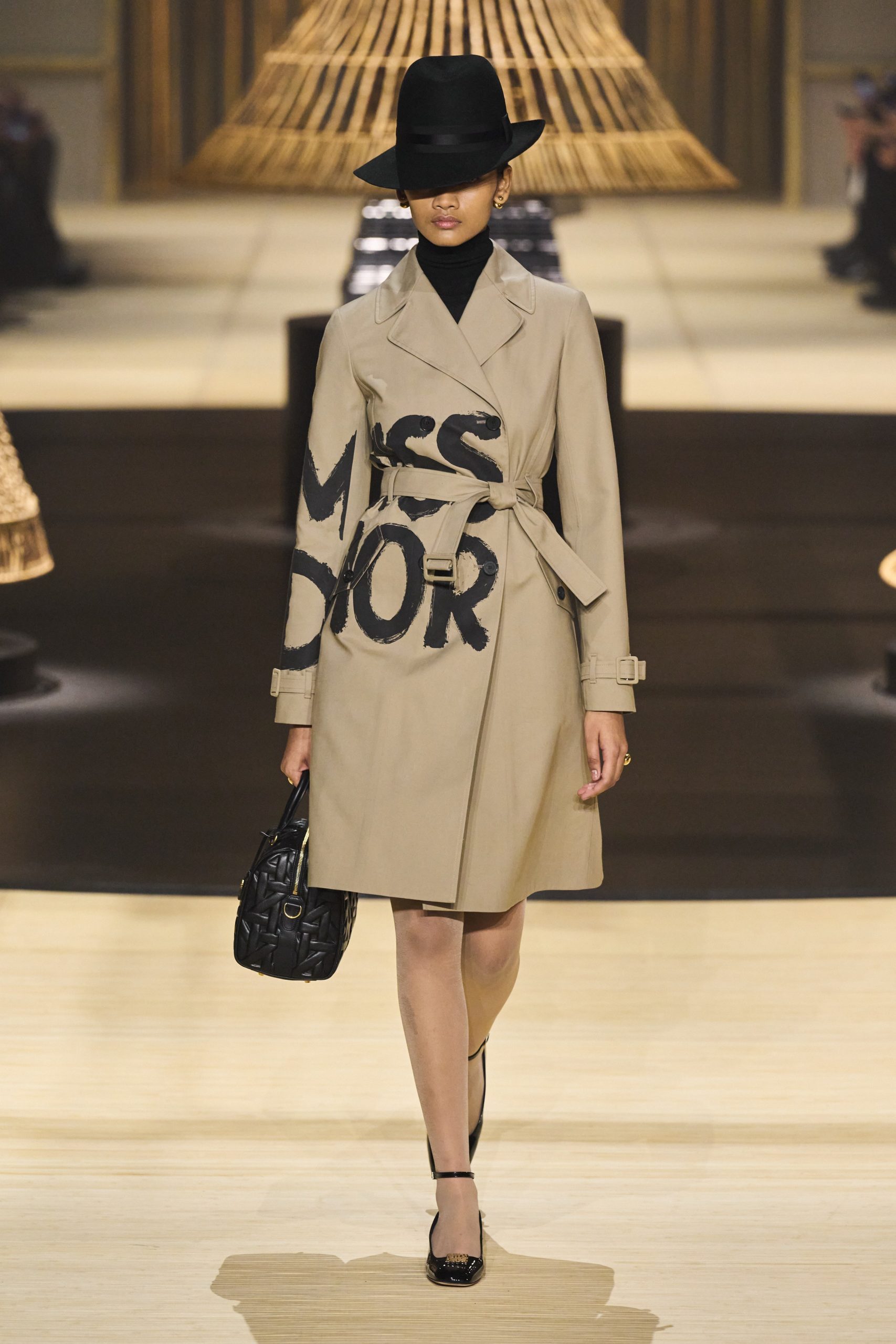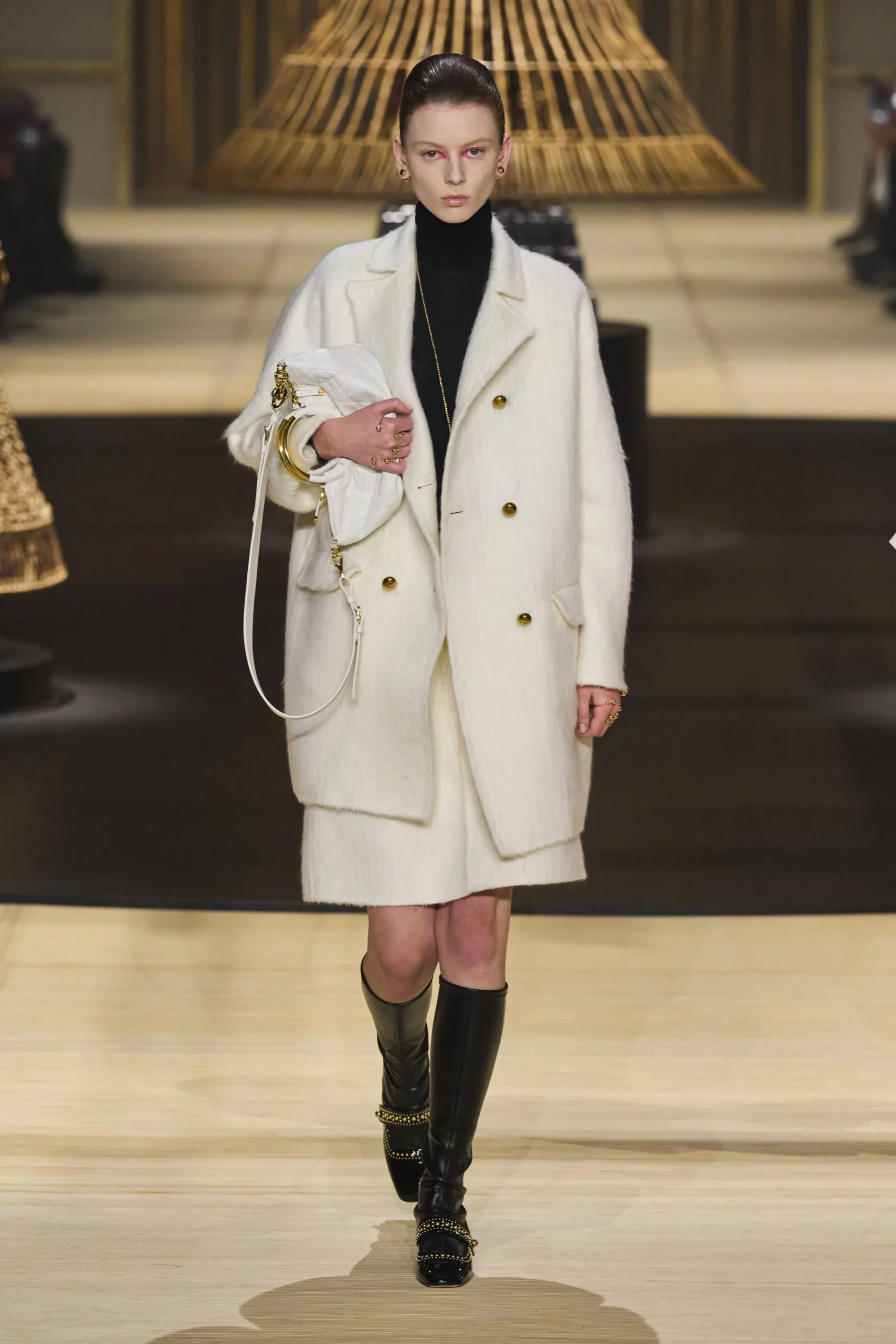You couldn’t mistake the fact that Maria Grazia Chiuri was taking Miss Dior as her theme. The words were splashed large in hand-written graphics across her fall collection—but what read (deceptively) like graffiti turned out not to be that at all. As she explained in a preview, it was a blow-up of a Christian Dior archival logo, a piece of hand-drawn advertising artwork made for the launch of the now forgotten Miss Dior boutique in 1967.
You could see how Chiuri related to the Miss Dior touch-points. Pinned to her board in the Dior studio were visuals of Bohan surrounded by models in late-1960s A-line minis and maxi-dresses, as well as the work of the ultra-glamorous Gabriella Crespi, the Italian avant-garde furniture and interior designer Bohan commissioned for the store. Chiuri pointed out how very different the A-line silhouettes were from the original waisted Christian Dior New Look. There was a good reason for that, she said, since the corseted and padded understructures made to fit individual couture clients couldn’t be reproduced in factories.
And besides, that angular ‘Mod’ look was the way pop style had gone, in a seismic time for the democratization of fashion, famously driven by youth movements and the beginnings of Women’s Lib (as feminism was then labelled.) In a way, Chiuri’s work at Dior ready-to-wear has been about liberating women—and herself, as a designer—from the tight-waisted Bar-jacket all over again. In this collection, all the jackets and outerwear were in non-nipped shapes, the trousers slouchy, the low block-heeled boots and shoes designed for easy walking.
Notes of the ’60s-lite reverberated through the styling—double-face cashmere miniskirt sets with matching sleeveless tops, black turtlenecks, swinging gold pendant necklaces—and occasional bursts of Gainsbourg and Birkin’s “Je T’aime… Moi Non Plus” on the soundtrack. (That sexual-revolution pop landmark dates from 1967, too.) Studying the Miss Dior period, Chiuri said she’d noticed how Bohan was the first to start applying printed logos on headscarves, and how shoes, stockings, socks, lingerie and bags were wildly popular as brand extensions.
As in ’67, so in ’24. Chiuri’s patent ankle-strap pumps, block-heeled Mary Janes and modernized ’60s black multi-buckled ‘wet-look’ kneeboots are catnip, cleverly accessorized here and there with gold Miss Dior logo-buckles on the toes. When some of the models turned around, black stocking seams were seen to be embroidered with Miss Dior, in hand-written script.
It’s her ability to design a cleverly-merchandized, full-spectrum wardrobe and slews of playful-branded accessories that’s made Chiuri’s Dior such a popular hit in stores.


